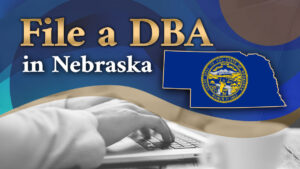Boards need to discuss horrible ideas: the idea that your product might no longer be relevant to your target market, the idea that your staff might prefer to work elsewhere, or that your technology might leave you unable to deliver goods and services. These are not issues that management like to talk about and, indeed, when we are being honest these issues scare directors as well as executives. But we do need to talk about them.
A recent failure in IT service left an airline unable to fly because it could not book passengers on to flights, work out where its planes were, or roster crews to work. The booking platform had been outsourced and the failure breached the service level provided under the outsourcing contract. Now journalists are reporting that the resulting damages may bankrupt the IT service company and the airline is struggling to reassure potential passengers that they can be relied upon; not an easy task when for several days the news headlines were about executives missing meetings, families unable to return from holidays and brides unable to attend their own weddings.
The key question of ‘what will happen if the technology fails’ had been asked and answered with assurances of back up sites, time limits on outages and other comforting facts. These assurances proved false. Did something stop the board from asking questions that might have revealed that the assurances were not deliverable under the arrangement as implemented?
Was it a lack of understanding of the importance of a booking system to an airline? I don’t think so.
Could it have been that the board were totally trusting of IT suppliers who had never before failed in any way? I doubt it.
Or was it that, having asked a good question and received a satisfactory answer, the board conversation quickly moved on? Could directors have been uncomfortable with pursuing the idea of what a total failure would mean?
Boards need to be places where uncomfortable conversations happen. A recent harassment case was followed by a spate of embarrassing remarks such as ‘we always knew he was a party guy’ or ‘everyone knew he liked the ladies’. Why did the board not consider the implications of these gems of knowledge? With hindsight it all seems so predictable. Why was it too hard to apply foresight?
Occasionally boards discuss issues that dramatically affect the future of the company. It is imperative that directors speak up and follow their trains of thought to the most uncomfortable destinations, as well as to the most likely, or most profitable ones. Questions such as ‘What is the worst thing that can go wrong’ should receive several considered answers, from the board, management or specialist advisers. Mitigation or avoidance strategies can only be designed if the underlying events have been deemed possible.
As directors we must tackle the dangerous ideas in a safe environment; before we ever encounter them in real life. We need to allow thoughts to wander to the darkest outcomes and to contemplate with serious intent exactly how much we are willing to risk on each strategic venture. The trouble is, we often find it hard to give voice to these thoughts for fear of being perceived as unhelpful, unsupportive, or biased against the proponent of each strategy.
Chairmen can help by encouraging their boards to spend more time on the potential downsides than they do on the potential upsides. Only when it is safe to discuss the unspeakable horror of adverse outcomes will it be possible to avoid them.
What do you think?
———————————————————————————————————-
Julie Garland-McLellan has been internationally acclaimed as a leading expert on board governance. See her website and LinkedIn profiles, and get her book Dilemmas, Dilemmas: Practical Case Studies for Company Directors.
 Sections of this topic
Sections of this topic















